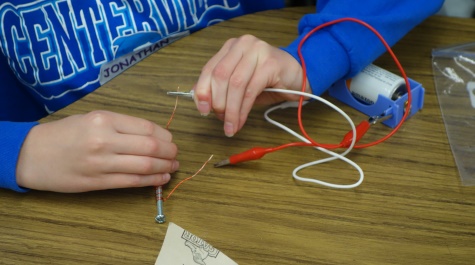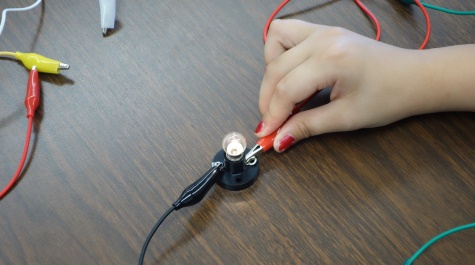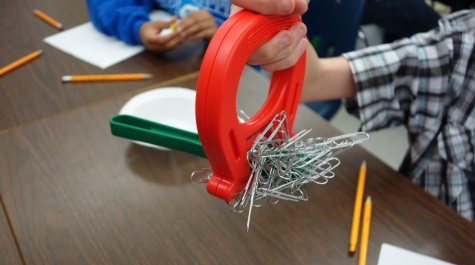Electrifying Days with the STEM Education Alliance
 Community engagement and collaborative partnerships are at the forefront of the STEM Education Alliance’s new STEM-a-thon programs. Designed as in-school field trips, the Alliance’s team of educators recently delivered fun-filled, student-centered STEM-a-thons for four Virginia Beach schools.
Community engagement and collaborative partnerships are at the forefront of the STEM Education Alliance’s new STEM-a-thon programs. Designed as in-school field trips, the Alliance’s team of educators recently delivered fun-filled, student-centered STEM-a-thons for four Virginia Beach schools.
STEM-a-thons focus on individually designed activities that are specific to SOL content areas. This fall, the topic was electricity. Kelley Clark, Jake Joseph and Karen Hogue, along with two graduate assistants, Katie Brenan and Brian Kooyman, worked collaboratively with Virginia Beach fifth grade teachers to guide more than 400 students through different classrooms, with a range of engaging activities that revolved around the theme of electricity. These hands-on, minds-on activities included:
Discovering how to make series and parallel circuits using wires, bulbs and batteries.
Identifying insulators and conductors.
Building an electromagnet from a wire and nail.
Creating projects with Snap Circuits kits.
Gathering data about magnet strength.
Making electricity posters.
Each child took home a tote bag of electricity-themed materials including kits to make circuits and electromagnets. In addition, classroom teachers were provided with large Snap Circuit kits and other STEM-related supplies. To create important career and college connections, students participated in “Lunch with an Engineer.” Local engineers were energized by the student crowds and talked about their career pathways while engaging with the students in an informative Q&A session.
The electricity STEM-a-thons were developed and presented by the STEM Education Alliance at the College of William and Mary and funded through the Operation PRIDE and Military-Connected Academic Support Program (MCASP) contracts.




